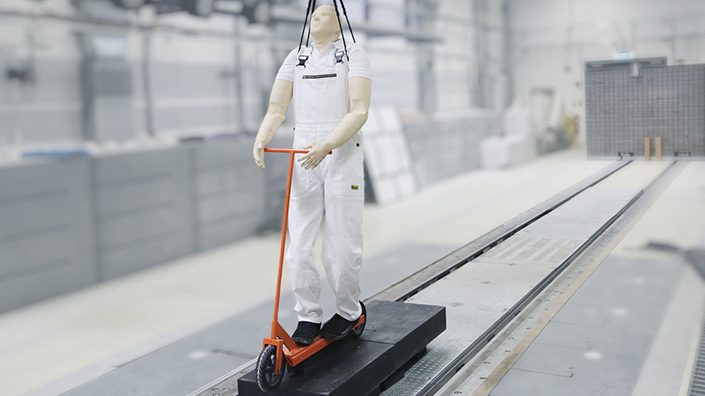The tests, which used a crash test dummy and finite element simulations, also revealed the need for new protective materials, according to the project team at the Fraunhofer Institute in Freiburg, Germany.
The researchers aimed to investigate the course of typical e-scooter accidents and determine the associated risk of injury, while separately testing novel materials for helmets and other protective gear.
Electric scooters and other e-mobility options offer a flexible and environmentally-friendly way to get around urban environments, the team said, but they also present new safety risks.
In 2020, Germany recorded a total of 2,155 accidents involving e-scooters, in which five people died and 386 were seriously injured. In 75% of the cases, the e-scooter rider was liable for the accident.
Accidents in which the driver lost control were particularly common, as was speeding or driving in the wrong direction. In many cases, alcohol played a role.
The crash test team, led by Dr Matthias Boljen, investigated e-scooter collisions with a kerb, a very common type of single-vehicle collision.
“We worked with a crash test dummy, just like in crash tests conducted in the automotive industry,” said Dr Boljen. “The dummy was placed on the replica e-scooter model and driven against a kerb at angles of 60° and 90°, and at speeds of 10, 20 and 30km/h.”

(Credit: © Fraunhofer EMI)
High-speed cameras showed how the body is catapulted over the handlebars and flung several metres — depending on the impact speed — before crashing onto the ground. The tests demonstrated that serious injuries, in particular head injuries, could occur in all tested scenarios. The knees were also at risk of injury.
“It was painful just watching the videos during the analysis,” said Dr Boljen.
The team also analysed the accident scenario in finite element simulations. The simulation software showed which accelerations act on the head and knees. Those values were then used to determine the probability of certain injuries to the body parts.
“The crash tests with the dummy and numeric simulations with the human model both led to the same conclusion,” said Dr Boljen. Even at a seemingly low speed of 10km/h (6.2mph), a collision at a 90° angle reportedly caused enormous accelerations of 170g on the human body.
Wearing a helmet and protective gear is therefore highly recommended, the researchers said, as they decrease the probability of serious injuries.
“However, no helmet can prevent the accelerations acting on the head in the event of a direct impact – they can only reduce some components of these to a certain extent. Strictly speaking, the risk of traumatic brain injury exists whether the driver wears a helmet or not,” said Dr Boljen.
The researchers also discovered that the head impact speed measured in the simulation exceeded the maximum impact speed of 5.4m/s stipulated in test standards for bike helmet safety, showing that conventional bike helmets and protective gear do not offer complete protection.
“Protective gear often uses plastics with a honeycomb structure. Our tests in the laboratory showed that materials with a TPMS (Triply Periodic Minimal Surface) structure offered much better protection against kinetic effects,” said Dr Jörg Lienhard, responsible for lightweight construction in the component safety and lightweight construction unit.
The TPMS structure is characterised by repeating elements that form an ‘airy’ open structure. This structure is particularly good at distributing kinetic energy from shocks across the surface area, the researchers said, therefore reducing the pressure on impact areas.
The structures, which were inspired by biological examples such as the chitin exoskeletons of insects, could be 3D printed using different materials.
The Fraunhofer team hopes that specially designed protective equipment such as helmets, knee protectors and light crash absorbers will be available in future. The experts are planning further crash tests and simulations, and aim to investigate how a rider’s reflex movements during an accident affect the risk of injury.
The study was carried out within the framework of the Humad (Human Accident Dynamics) research project.
Become a net zero expert – watch free Sustainability in Engineering sessions on-demand now.
Content published by Professional Engineering does not necessarily represent the views of the Institution of Mechanical Engineers.